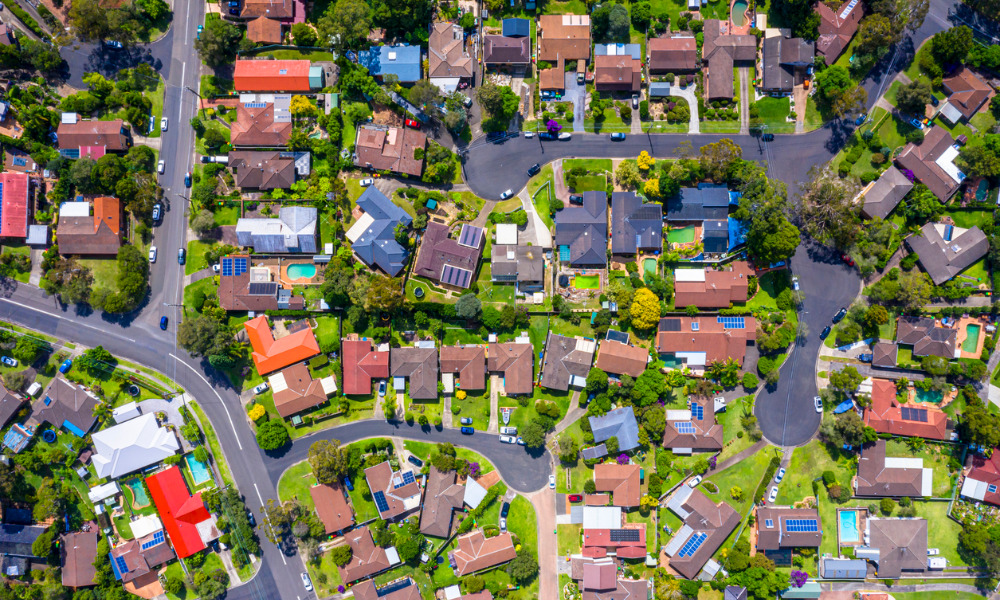Almost half of Melbourne suburbs also saw a drop

Housing values fell in nearly 40% of Sydney suburbs during the first three months of 2022, while nearly half of Melbourne suburbs posted price declines, according to data from CoreLogic.
Of the 917 Sydney suburbs analysed by CoreLogic, 354 posted a drop in median dwelling values, according to The Australian Financial Review. House prices in 189 Sydney suburbs have fallen, while unit prices dropped in 165 markets.
In Melbourne, dwelling prices dropped in 303 suburbs in the same period, with 154 housing markets and 149 unit markets posting price declines.
The largest price declines were recorded in some of the more expensive Sydney and Melbourne suburbs, according to Eliza Owen, CoreLogic’s head of research.
Inner Sydney suburbs Beaconsfield, Newton and Camperdown posted some of the largest house price falls at 7.2%, 5.8% and 5.7%, respectively, AFR reported. In Melbourne, Cremorne had the largest house price decline at 6.4%, followed by South Yarra (4.8%) and Toorak (4.4%).
“High-end and inner-city areas are emerging as the first suburbs to experience this shift in market conditions,” Owen said. “It is likely that slightly tighter lending conditions and higher average fixed rates are hitting the very top of housing markets first. These same areas are seeing some of the bigger jumps in advertised stock levels, too, so as we see new demand for housing in these areas decline, buyers have more choice, more time for decision-making, and more power at the negotiating table.”
Melbourne-based buyer’s agent Cate Bakos, of Cate Bakos Property, told AFR that concerns about rate hikes and global uncertainty were keeping some buyers on the sidelines.
“The constant talk about interest rate increases are making people nervous,” she said. “We’ve also got the federal election, which brings another level of uncertainty, compounded with the war in Ukraine, which are all impacting buyers’ confidence.”
Read next: Housing prices to fall as rising interest rates loom
Dan Grantham, a buyer’s agent in Sydney, said many buyers there have also pulled back.
“Buyers are not as motivated as they were only a few weeks ago,” Grantham told AFR. “Many have decided it’s best to sit back and wait until after the election and when the first interest rate hike occurs to see how things play out in the market.”
By contrast, all 337 Brisbane house markets analysed by CoreLogic posted a rise in median values, and only one of 171 unit markets reported a price drop. Similarly, all 314 Adelaide house markets analysed posted price increases, and only two out of 105 unit markets posted a drop.
“We’ve already seen a little bit of a slowdown in the rate of quarterly growth across Brisbane and Adelaide, which suggests the rate of growth may have peaked, but I don’t think these cities will move into a decline for quite a few months,” Owen told AFR. “Depending on how the market reacts to a rise in interest rates, we could see these markets slow down around June, when many economists expect the cash rate to rise.”
Dwelling values in seven out of 134 Canberra house and unit markets posted price drops, while six out of 55 house and unit markets across Hobart recorded declines, AFR reported. In Perth, 13.4% of suburbs analysed by CoreLogic recorded declines, while 18% in Darwin posted price falls.
Owen said that more suburbs are likely to record price drops as the new housing cycle moves into a downswing over the course of the year.
“We can’t say how much suburb values will fall, but based on some of the patterns we’ve seen from historic cycles, we can expect a bigger drop in values at the high end of the market, whereas the middle- to low-value tiers will see more resilience, noting that the upswing period in these market segments haven’t been as strong,” Owen said. “I think capital growth will be really hard to pinpoint in the context of rising cash rates, but there are markets that could hold much steadier amid a cash rate increase. I suspect these will be some of the relatively affordable markets on the periphery of areas that have been popular with internal migrants, such as the hinterland of the Gold Coast or Sunshine Coast.”
As an example, Owen said she thought that Parramatta in Sydney would be “interesting to watch.”
“The ongoing development of infrastructure, people gradually returning to offices, and the return of overseas migration could help to stabilise this market, which didn’t see as strong a price increase as other suburbs of Sydney,” she said.



